Demand for trucking services keeps rising, driven up by a constant increase in cargo shipments. The variety of freight transported by 18-wheelers all around the country is enormous: from cars, robotics and electronic devices to household products and foodstuffs. Still, for many professional truckers, the never-ending argument about flatbed vs dry van remains relevant, as their earnings directly depend on the efficiency of the chosen cargo transportation method.
It is critical for shippers to define the most suitable type of trailer for the type of freight at hand. Not only does this affect the hauling capacity and profitability, but it plays a significant role in the security and safety of the cargo.
Regardless of the truck driver’s level of experience, it is important to understand the differences between a flatbed and a dry van.
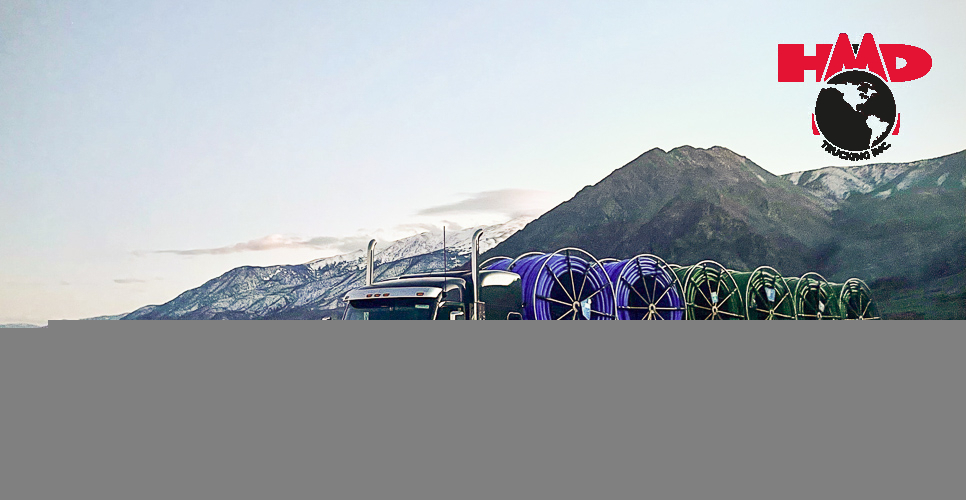
This article will provide a comparison of flatbed vs. dry van, an overview of each type of trailer, including its uses and advantages. You will also learn what sets them apart and why you would want to choose one over the other. Read on to learn more about the differences between a flatbed and a dry van.
Contents:
- What Is a Dry Van?
- Dry Van Dimensions and Specs
- Dry Van Pros and Cons
- What Is a Flatbed?
- Flatbed Dimensions and Specs
- Flatbed Pros and Cons
- Dry Van vs Flatbed Comparison: Which Is Better?
- Conclusion
What Is a Dry Van?
The definition of a dry van is “an enclosed shipping container used for transporting many common goods, such as furniture, electronics, apparel, and non-perishable foodstuffs, that is goods that do not require refrigeration”.
The dry van trailer is typically 53 feet long, and fully enclosed with four walls and a roof. That is what sets it apart from other trailer types: its design provides protection to the freight from bad weather and fluctuations in humidity. Additional cargo securement systems can be added to the dry van to provide extra protection from falling, shifting, tampering and theft during transportation.

Dry van trailers are typically used for long-distance logistics: not only do they protect freight better than open-bed trailers, but they also have less airflow resistance and therefore, higher fuel efficiency. In addition to that, dry vans have hardwood floors with multiple insulating layers, which protect transported goods from exposure to moisture.
Further advantages of this type of trailer are competitive pricing and efficiency, which contribute to demand for dry vans being very high.
Driving dry van trucks require only a Class A CDL, attracting more truck drivers who are only starting their career. The number of dry van truck driving jobs remains high, as most industries require this type of trailer for shipping.
Dry Van Dimensions and Specs
Dry vans are the most common type of trailer and come in a variety of shapes and sizes.
Types of Dry Van Trailers
There are three main types of dry van trailers: sheet and post dry vans, plate dry vans, and custom spec dry vans.
Sheet and Post Dry Vans
Sheet and post dry vans are built from lightweight sheets of aluminum and vertical posts, making them strong yet light.
Plate Dry Vans
Plate dry vans are made from corrugated metal sheets, giving them increased strength and durability.
Custom Spec Dry Vans
Custom spec dry vans are built to the customer’s exact specifications, so they will fit their tasks best.
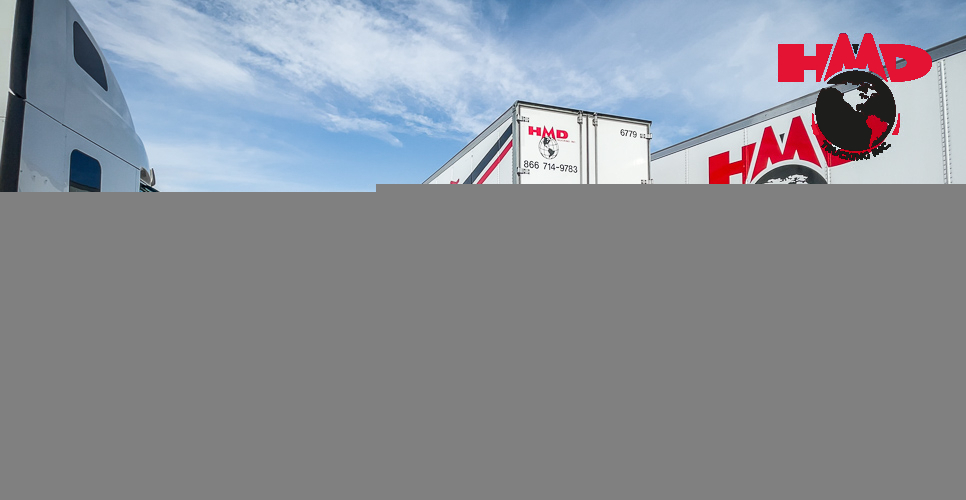
Dry Van Weight Limit
The weight limit of a dry van depends on the type and size of the trailer. A standard dry van utility can hold up to 45,000 pounds of cargo, but the number can vary depending on the trailer design and specifications.
Standard Dry Van Trailer Height
A typical dry van trailer height is 8'6". However, this can vary depending on the type of trailer and the load being transported. For example, plate dry vans are typically taller than sheet and post dry vans due to their increased strength and durability.
Dry Van Pros and Cons
Let’s look at the advantages of dry vans.
Pros of Dry Van Trucking
- Cargo protection
As dry vans are fully enclosed on all sides, the freight is protected and shielded from snow, rain, sleet, heat and humidity fluctuations. The cargo stays clean and dry. The enclosure also provides more safety and security to the cargo: the risk of tampering, theft, falling or shifting is significantly decreased.
- Affordability
This type of trailer is thought to be one of the most affordable truckload trailers. Besides, dry van trailers require no extra services or special operations to maintain. That is also the reason why many carriers provide this specific type of trailer.
- Shipping range
This type of trailer is versatile in nature, as it can carry a huge variety of goods: furniture, clothing, electronics, medical goods, machinery.
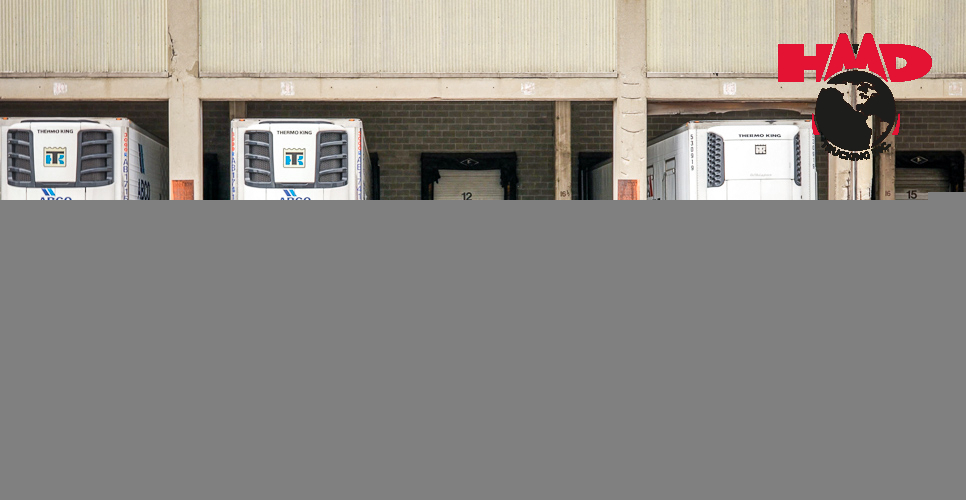
- Easy set up and compatibility
The setup for this type of container is quite simple and saves time and effort. The doors of the trailer can be adapted to the cargo type, they are well lit inside. As the dry van trailers are built with sturdy metal frames and walls — which also makes them more durable — they can carry heavy cargo. Loading and unloading are a bit easier, as the trailer height and dock height are typically the same.
- Drop and hook option
Dry van containers are easily combined with the drop and hook trucking method. This is a freight delivery method that allows the driver to pick up a preloaded or empty trailer from a loading dock and drop it off at another loading dock or warehouse, saving a lot of time in the process.
- Cost minimization
From the shipper’s perspective, the dry van minimizes risk and losses due to cargo damage. These trailers come in a range of sizes, so they can be chosen to fit the specific shipper needs.
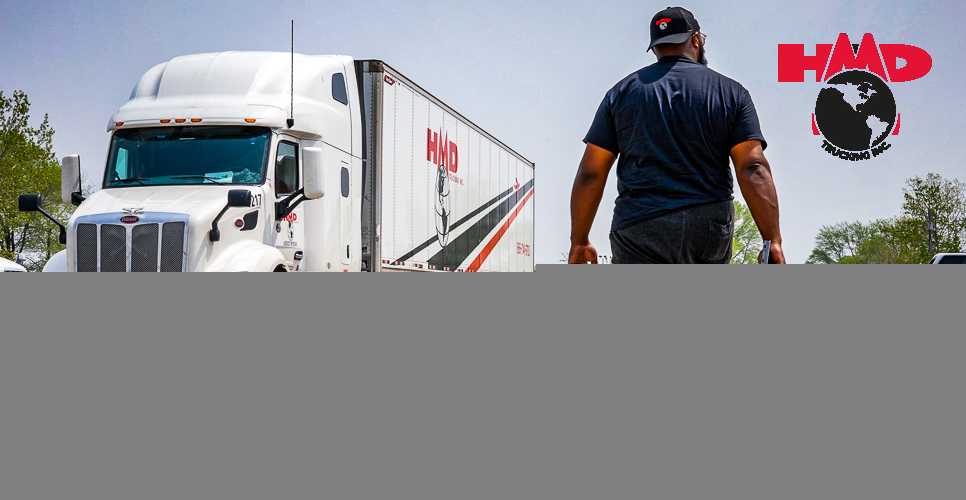
Cons of Dry Van Trucking
Despite their obvious advantages, dry vans still have some drawbacks to be considered.
- Lower pay
With dry van being the most common type of trailer, both demand and supply are high. There are a lot of shippers and truck drivers in this competitive market, which means lower pay in comparison to other types of freight.
- Smaller capacity
There are certain dimension constraints, so a dry van cannot be used to carry freight of just any size — a flatbed would be a better option. Still, a dry van protects the freight from bad weather and physical damage.
- Weaker floor
Heavy cargo can potentially damage the floorboards of the trailer. Hardwood floors inside most dry vans are also vulnerable to moisture damage. These mean maintenance and repair costs for the shipper.
- Less environment control
As dry vans are not equipped with a refrigeration or ventilation system, the weather outside can affect the temperature inside the trailer: it can get too hot or too cold for certain perishable or temperature-sensitive cargo. This reduces the range of goods that can be transported: only nonperishable goods can be guaranteed to be shipped in perfect conditions.
- High percentage of fatal crashes
Statistics show significantly higher crash and fatality rates for this type of trailer compared with flatbeds: more than 40 percent against 11 percent of vehicles in 2019. That could be due to inadequate weight-to-volume ratios of loaded containers or overloading, which would cause cargo misalignment and imbalances.

What Is a Flatbed?
A flatbed is a type of trailer that has an open-top platform with no walls or roof. It is used to transport goods and materials that are too large to fit into a standard closed-body trailer, such as bulky equipment, oversized items, building and construction materials, furniture, landscaping materials, equipment for the oil and gas industry, etc.
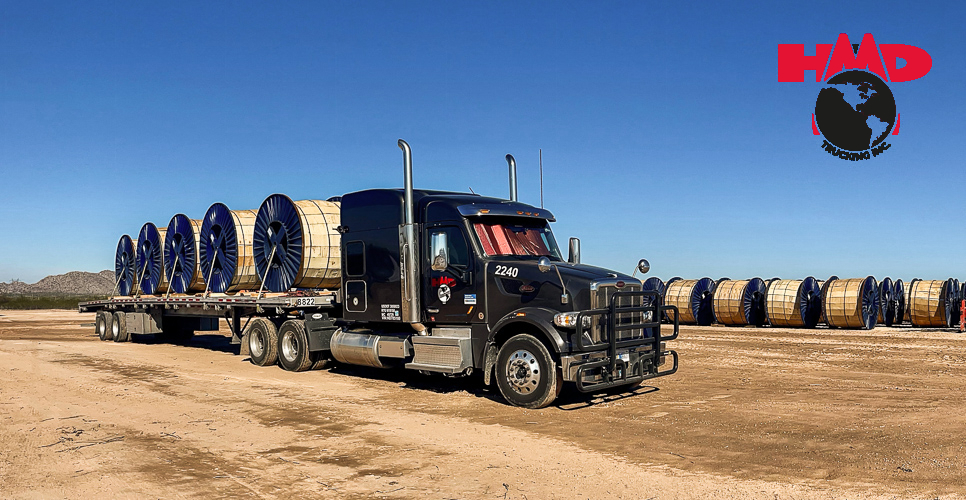
This type of trailer is very versatile and can be used for short or long hauls.
A flatbed usually has a steel frame, but it can also be made of aluminum or wood. Flatbeds come in various lengths and widths, depending on the size and type of the load that needs to be transported. The frames also have tie-down points to help secure the cargo during transit. Most flatbeds also have rails along the sides for added stability and protection for the load.
Flatbeds can be customized to accommodate oversized or oddly shaped cargo, making them a popular choice for those hauling specialty items. The flexibility and strength of flatbed trailers make them a versatile choice for many types of freight.
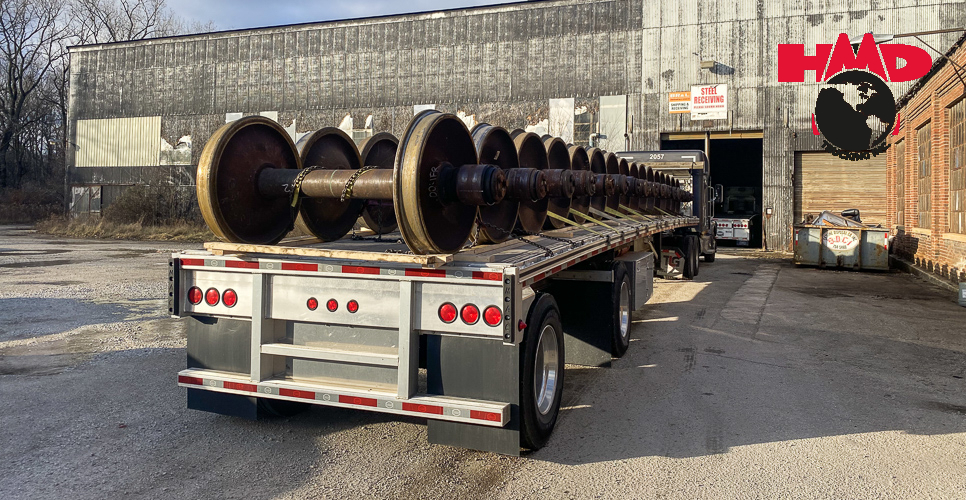
Flatbeds do not limit the shipper in the variety of transported cargo: multiple goods can be stacked on top of each other, leaving more space for other freight.
Driving with flatbeds can be physically demanding, and it's crucial to take care of your feet. To learn more about proper boots for truck drivers, check out our article on the topic.
Flatbed Dimensions and Specs
Flatbeds can be longer and wider than dry vans, allowing for larger loads. The length of a flatbed trailer ranges from 28 to 53 feet, with widths from 96 to 102 inches. The height of a flatbed trailer is also adjustable, allowing it to fit any size load. For example, a 48 foot flatbed trailer can haul two 20 foot containers side by side with a maximum height of 13 feet and 6 inches. When properly secured, this weight capacity can be increased significantly.
Types of Flatbed Trailers
There are several types of flatbed trailers, each designed to suit a different type of load.
- Lowboy
The lowboy container design provides for hauling tall and heavy goods. They have a low deck height, allowing them to accommodate a taller cargo.
- Step deck
Step decks have two levels, and they can carry cargo on both.
- Double drop
Double drop trailers feature two “drops” in the bed, allowing for two levels of cargo. The drops are usually 12 to 18 inches deep. The double drop trailer has a lower deck than a standard flatbed, which significantly improves its ability to haul heavier loads.
- Stretch flatbed
Stretch flatbeds feature a longer bed, usually between 36 and 48 feet long. These trailers are ideal for hauling long or bulky items.
The capacity of flatbed trailers varies, but they can generally carry up to 45,000 pounds of cargo. The 53 foot long flatbed can carry up to 80,000 lbs.
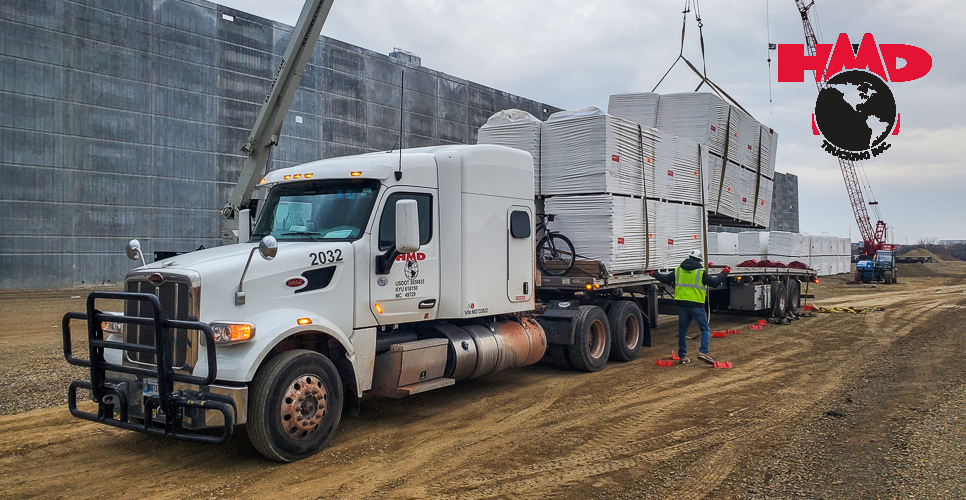
Standard Flatbed Trailer Height or How Tall Can a Load Be on a Flatbed Trailer
The height of a load on a flatbed trailer is largely determined by the height of the trailer itself. For example, if you are using a lowboy trailer, your load can be up to 9 feet tall. With a standard flatbed trailer height, your load can be up to 8 feet tall. It is important to keep in mind that some states have laws that limit the height of loads on certain highways, so be sure to check the local regulations before loading up your trailer.
Flatbed Pros and Cons
The Pros of Flatbed Trucking
There are quite a few advantages to this type of trailer.
Income Potential
A flatbed truck driver salary is typically higher than that of a dry van trucker. Flatbed drivers are paid more, because they put in extra time securing or tarping cargo and bear considerable responsibility for cargo safety. This type of trailer typically carries more goods and heavier loads than dry vans, which makes a dry van driver salary smaller.
Securing the freight on a flatbed is usually a bit more challenging than dry van securement. Technical prowess and the ability to inspect and handle many types of cargo are a requirement and can provide a boost to the truck driver's pay.
Career Advancement in Flatbed Trucking
Demand for flatbeds keeps growing, meaning there is always plenty of work and opportunity for career advancement for flatbed truckers. That said, greater responsibility and higher requirements associated with this job mean there are fewer flatbed drivers than dry van drivers, and the competition when looking for a new job is lower.
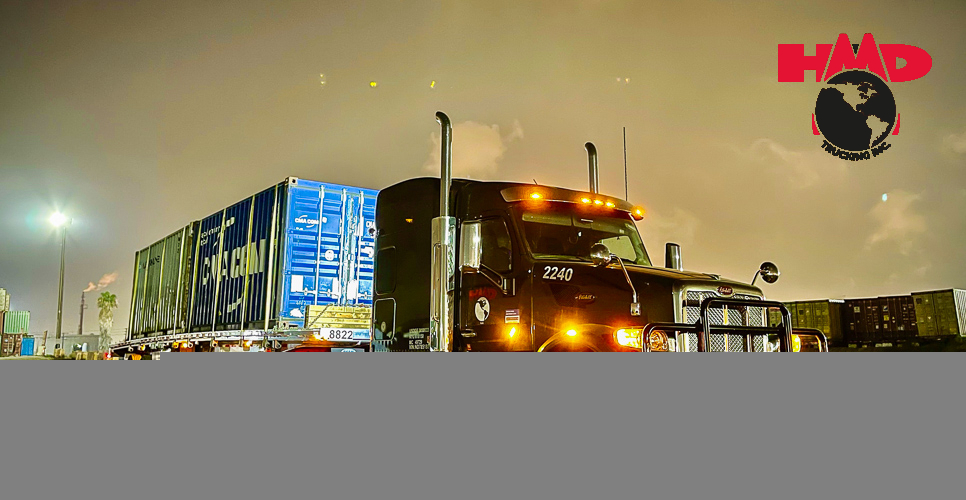
Cargo Variety and Flatbed Weight Limit
As flatbeds have more space for freight, and a higher maximum capacity and flatbed weight limit, in comparison to dry vans, any type of cargo can be transported. Even oversized cargo and specialty loads can fit onto a flatbed trailer.
A Dynamic Job
Finally, flatbed trucking is a dynamic job: drivers are constantly moving and loading and unloading goods, so they remain busy and engaged.
The Cons of Flatbed Trucking
Flatbeds are not without their disadvantages.
- Weather vulnerability
This type of trailer is more susceptible to weather conditions than dry vans. The open nature of a flatbed can cause cargo to be exposed to wind, rain and other elements. This can be an issue for freight that needs to remain covered or protected from the elements. In addition, flatbeds require more specialized training for drivers, as they are loaded differently than a dry van. This can result in extended loading times and higher costs of labor.

- Stricter rules
Flatbeds require more securement of freight, as the cargo is exposed on all sides. It is important for the driver to be aware of the laws and legal regulations on proper securement when transporting freight on a flatbed. Additionally, many freight brokers and carriers have strict rules for how certain types of freight can be transported, meaning that drivers need to be knowledgeable about their cargo in order to stay compliant.
- Extensive driving experience required
Due to their size, flatbed trucks can sometimes be difficult to maneuver, making them unsuitable for some roads and cities with tight streets and corners. Flatbed trucking requires a lot of driving experience, extra responsibility and vigilance to be successful. Drivers must be comfortable with the size of their truck and aware of loading regulations and other safety concerns.
- Security issues
Drivers must also be aware of security-related issues when transporting cargo on a flatbed. The cargo is exposed, making it easier for thieves to spot valuable items. The driver needs to have special tarps and straps, and to know how to keep the cargo secure while in transit. They must be able to secure and pack the freight correctly to prevent potential high-liability accidents.
All of these factors make the flatbed trucking occupation a complex area of expertise that requires experience and knowledge, but pays better.
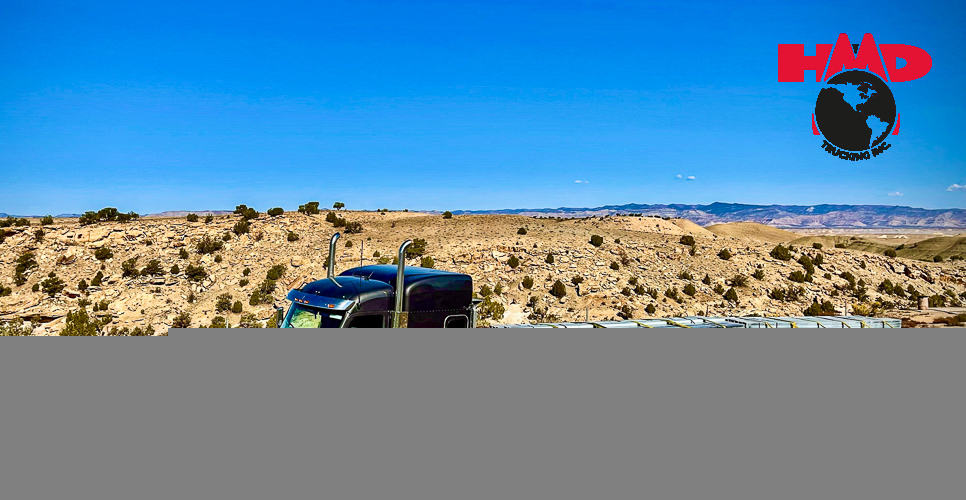
Dry Van vs Flatbed Comparison: Which Is Better?
When it comes to deciding between a flatbed and a dry van, there are a few key differences that can help to determine which type is more suitable on a case-by-case basis.
Flatbed vs Dry Van Pay
First, flatbed trucking pay rates are typically higher than those for dry van trucking due to the higher demands placed on the driver. Flatbeds require more attention to safety and securement during loading and unloading, so companies are often willing to compensate their drivers for the extra effort.
Flatbed vs Dry Van: Responsibility
On the other hand, dry vans are usually considered to require less responsibility, as there is less need for securing the cargo and managing it during transit. Therefore, the pay rate may be lower than that of flatbed truckers. Flatbeds, on the other hand, require a certain level of expertise and skill in order for the driver to properly secure and safely move the cargo.
Flatbed vs Dry Van: Capacity
Dry vans are typically smaller and can fit less cargo than flatbeds. Dry vans are also limited to shipping the size of goods that can fit into available space, while flatbeds can hold and move large and oversized items that would not be able to fit into a van.
Overall, when it comes to deciding on a preferred option between flatbed and dry van trucking, it really comes down to what suits the type of cargo and business needs best. Think about what kind of loads you will be moving and how much you’re willing to pay for them, as well as the amount of responsibility that comes with each type of truck. If you are looking for larger cargo and higher pay, then a flatbed truck may be the right option for you. However, if you prefer to transport smaller loads and avoid the extra responsibility, then a dry van might be the better option.
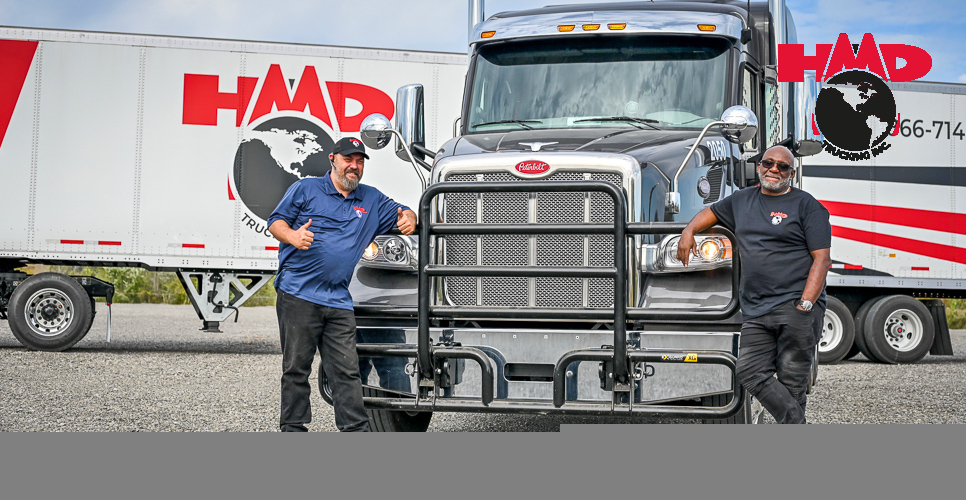
Conclusion
It is crucial to identify the main types of trailers for semi trucks, how they differ, and which one can be the best choice for your specific shipping or driving needs.
Flatbed trucking offers a unique set of advantages that make it an attractive option for many truckers. The primary benefit of this type of trucking is the income potential. Flatbeds typically carry more goods and are capable of hauling heavier loads than dry vans, so their drivers often earn more per mile.
Thus, when comparing flatbed trucking vs. dry van and choosing the right type of trailer, we have to take into consideration the actual business needs, the type and size of the cargo and the driver’s experience.
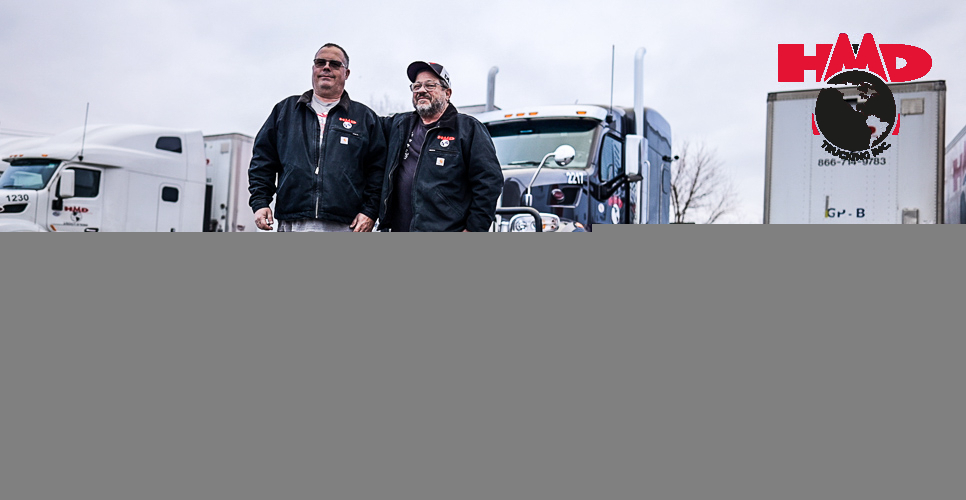
No matter the trailer type, go ahead and join the HMD team to become a driver for the Top Trucking Company and secure a top-notch truck driver CDL Class A jobs.
So, why wait? Submit your application right now!
Are you in the market for a new semi-truck and seeking guidance on selecting the best brand? Our article on "Best Semi Truck Brands" is your ultimate resource to make an informed decision and invest in excellence for your transportation.


